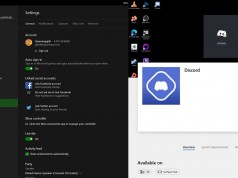While Google’s mobile-first indexing is not a new concept, it is still very much an extremely important one. This is why in this article, we are going to dive deep into this. Let’s get started.
Google’s Mobile-First Indexing
Google’s mobile-first indexing is exactly what it sounds like. It just means that the mobile version of your website becomes the starting point for what Google tends to include in their index. Over the years, mobile speed and responsiveness have become an extremely important baseline for how Google determines rankings.
History
The phrase “mobile-first” is a reference to the fact that the mobile version of a website is now being given more preference over the desktop or primary version of a particular website. Now, if your mobile and desktop versions are equally optimized then you can expect to be complying with this benchmark set by Google. Make sure you have optimized your content for mobile and used responsive design.
Up until a few years ago, you must remember that it was the desktop version of a website that was considered the primary. Back then, the mobile version of a website was always treated as a mere alternate version only. This is also the reason why Google used to previously encourage webmasters to build a separate mobile site (m.domain.com) to implement switchboard tags. Those indicated the existence of a mobile URL version with a special rel=alternate tag. Now that is no longer the case. Google, back then, didn’t put much effort into crawling and caching the mobile versions. However, as of right now, it is one of the topmost priorities of Google.
This benchmark has been set up by Google to keep up with the changing consumer behavior. Previously, consumers preferred browsing desktop sites more than scaled-down mobile versions. These days mobile sites have become very powerful, both visually and technically. This is why they are being prioritized by SEOs and marketing teams. Google considers mobile websites equal to a full-fledged desktop version of the same. So, now when it comes to content, structured data markup, hreflang (international tags), backlinks, etc, mobile websites need to be equally optimized.
Some Easy Steps you Can Take to Comply with Google’s Mobile-First Indexing
When it comes to this benchmark of Google, there is nothing to panic about. If your mobile site is not equally as attractive or fast, you won’t observe a massive drop in your ranking. However, if you optimize your mobile version of the website to comply with this Google benchmark, then you will see a big boost.
According to the latest guide by Google on this topic, you simply need to check if your mobile version of the website is responsive along with being fast. If your website passes both these tests then you may not have to do anything differently at all. Lastly, just make sure you keep yourself updated with all the latest requirements and that’s it.
This brings us to the end of our discussion on Google’s mobile-first indexing. Now, let us know some of your thoughts on the same.









